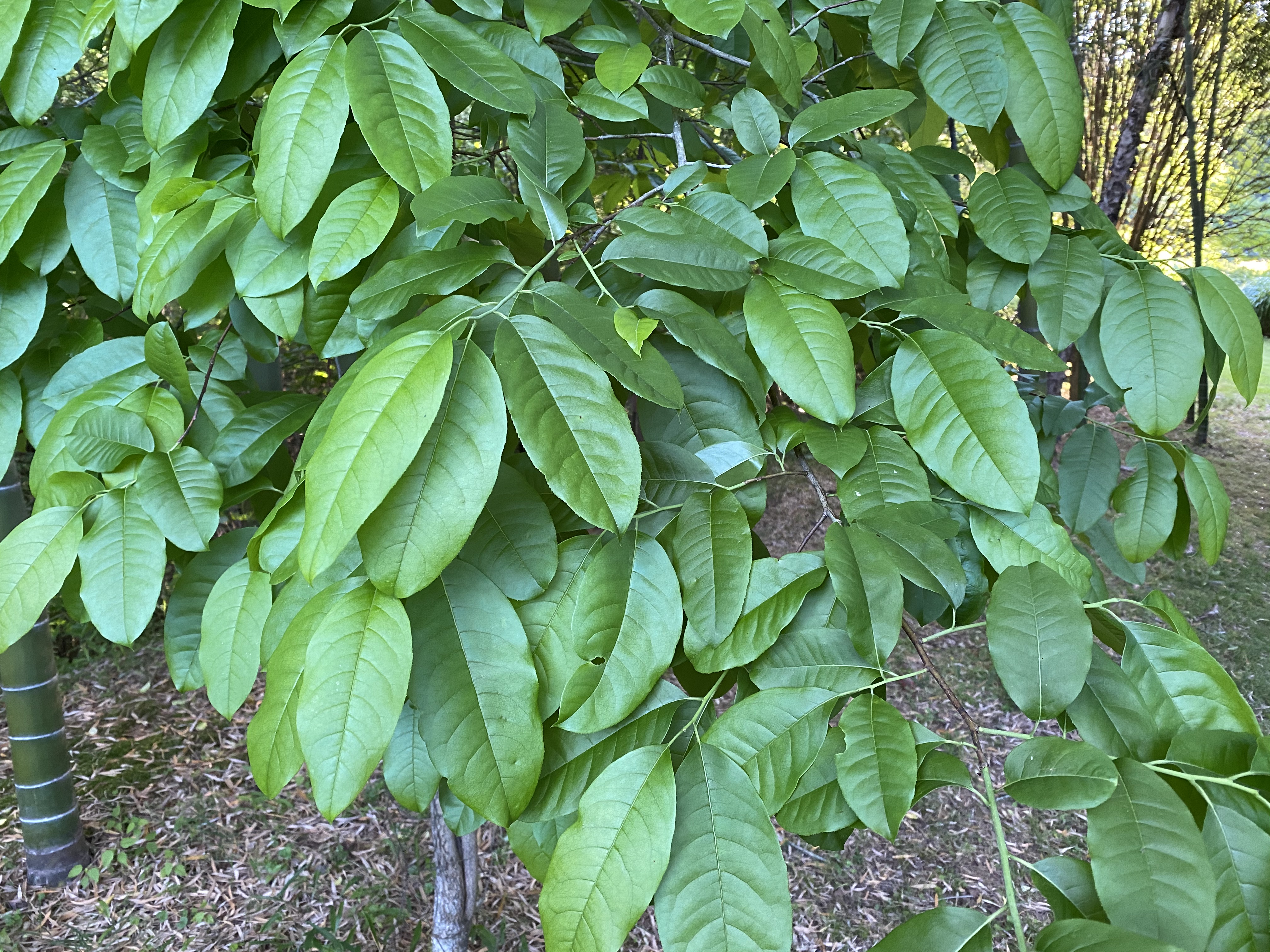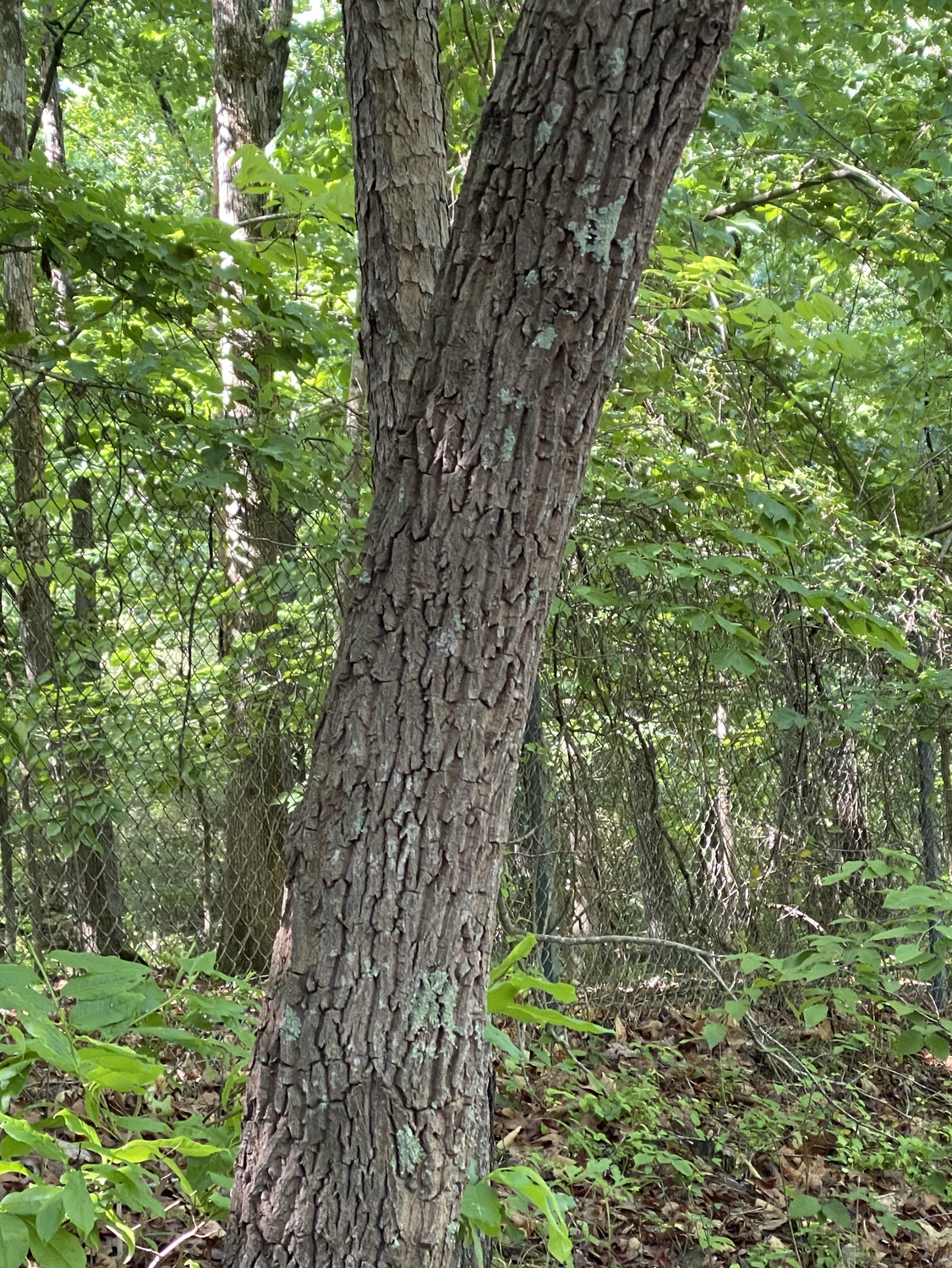TREES OF ATHENS: SIMPLE TOOTHED LEAVES
5/27/20
We have at least ten common local trees with simple toothed leaves, and they can be difficult to tell apart. For many of these, the bark is often the best clue for identification.
American Beech (Fagus grandifolia). The leaves have prominent veins and are rather stiff. The leaves also tend to be relatively wide, helping to distinguish the American Beech from the Winged Elm, Eastern Hophornbeam, and American Hornbeam. In the fall, the leaves dry to a pale tan and cling to the trees into early spring. The bark is smooth, commonly with lighter gray spots.
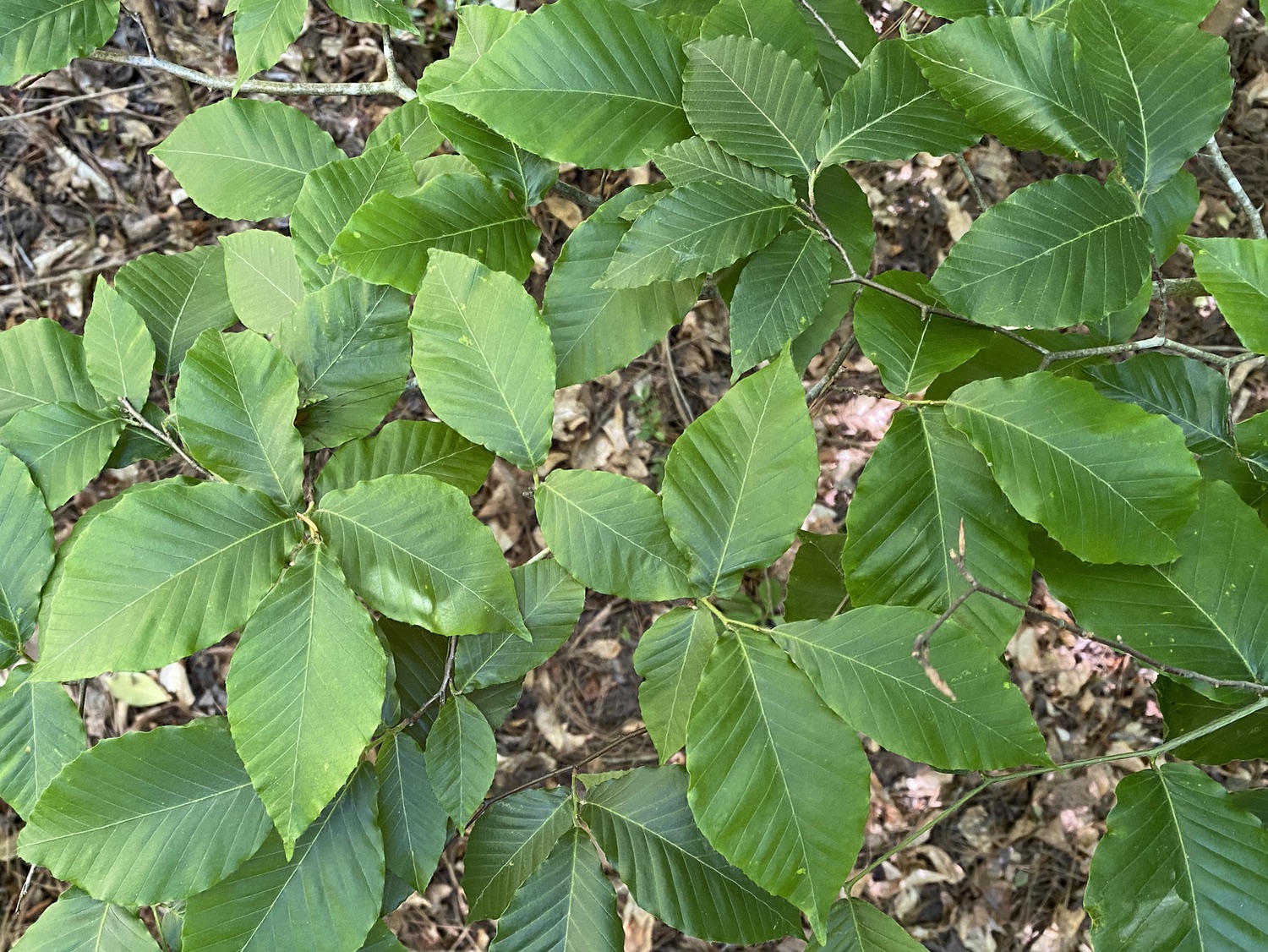
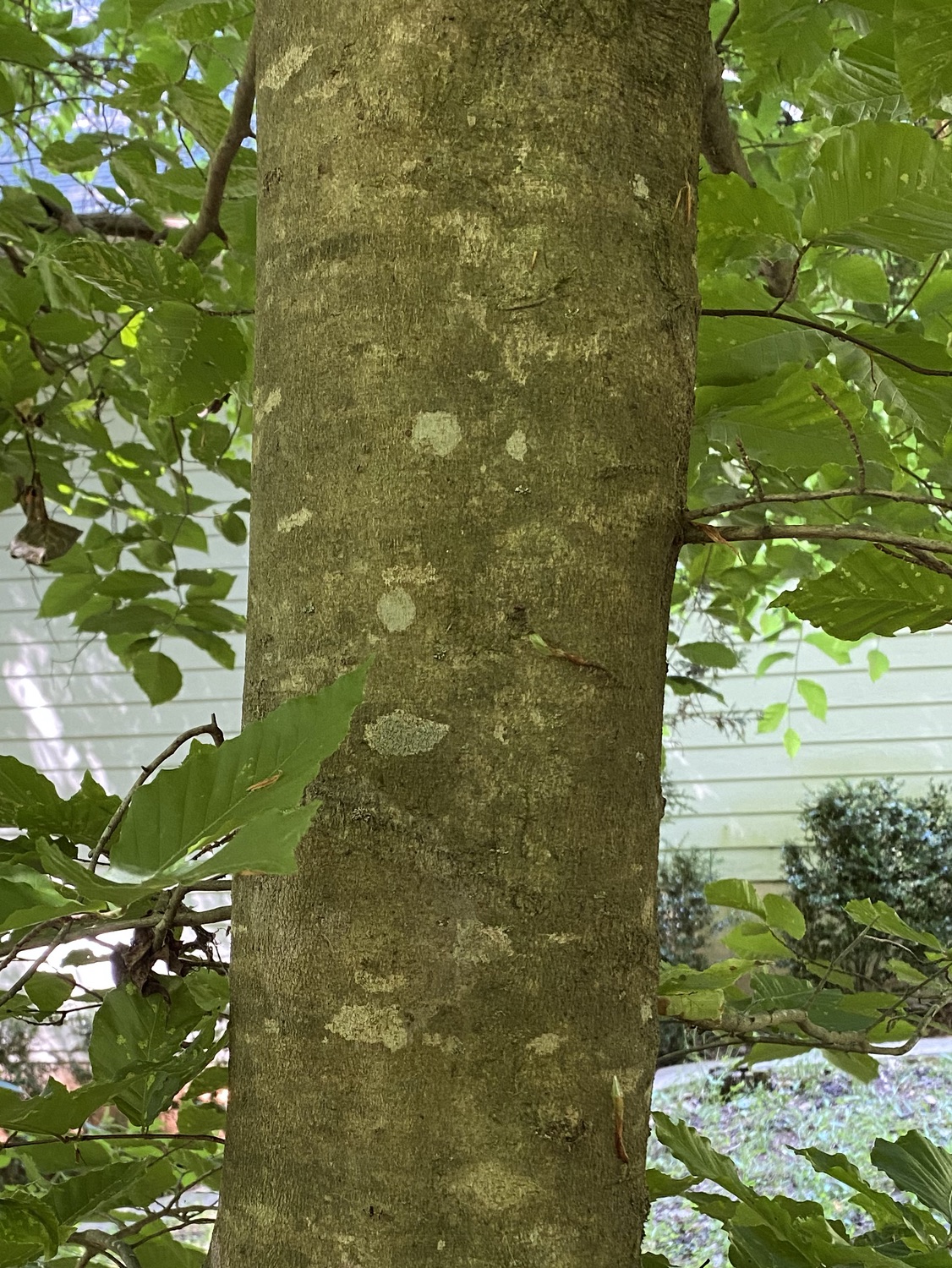
Winged Elm (Ulmus alata). The leaves are alternate and toothed, each about 2½" long, smaller than the Eastern Hophornbeam and American Hornbeam, with which it can easily be confused. The widest point of the leaves is about midway along its length. The species gets its name from the corky wings on some twigs, but not all twigs have these. Young trees have bark with well-developed corky ridges. The bark of older trees is also strongly linear, but lacks the corky ridges.
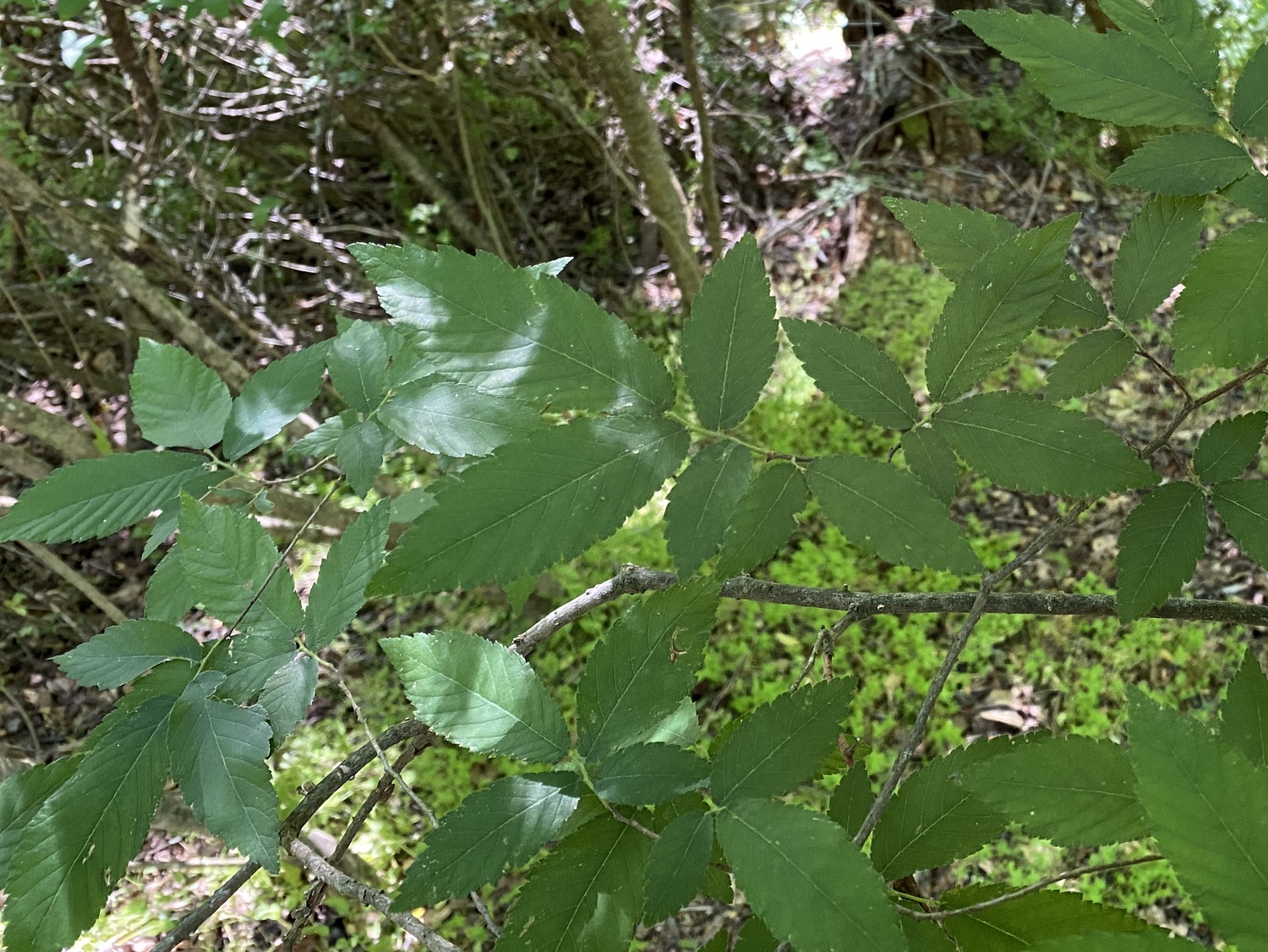
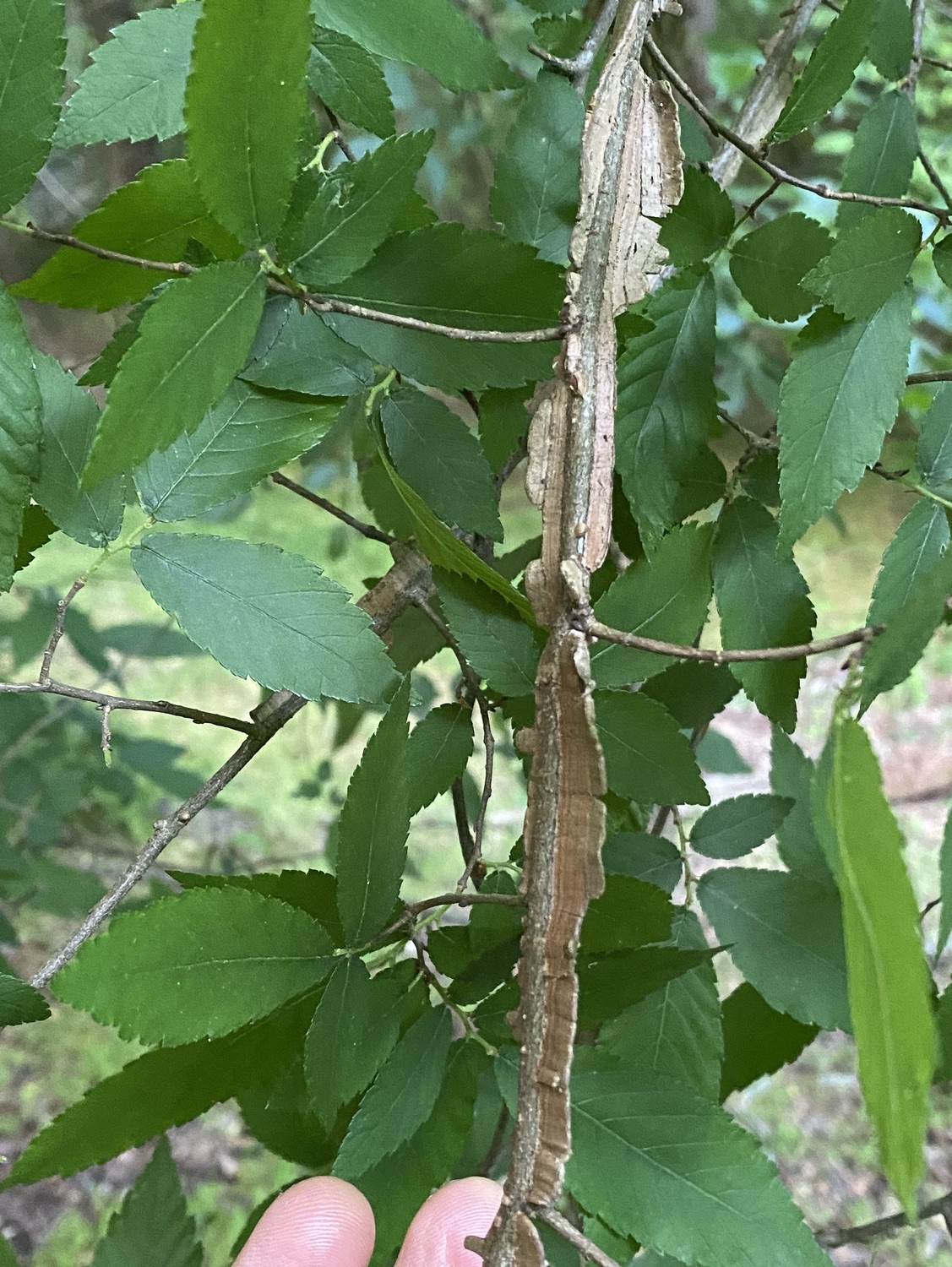
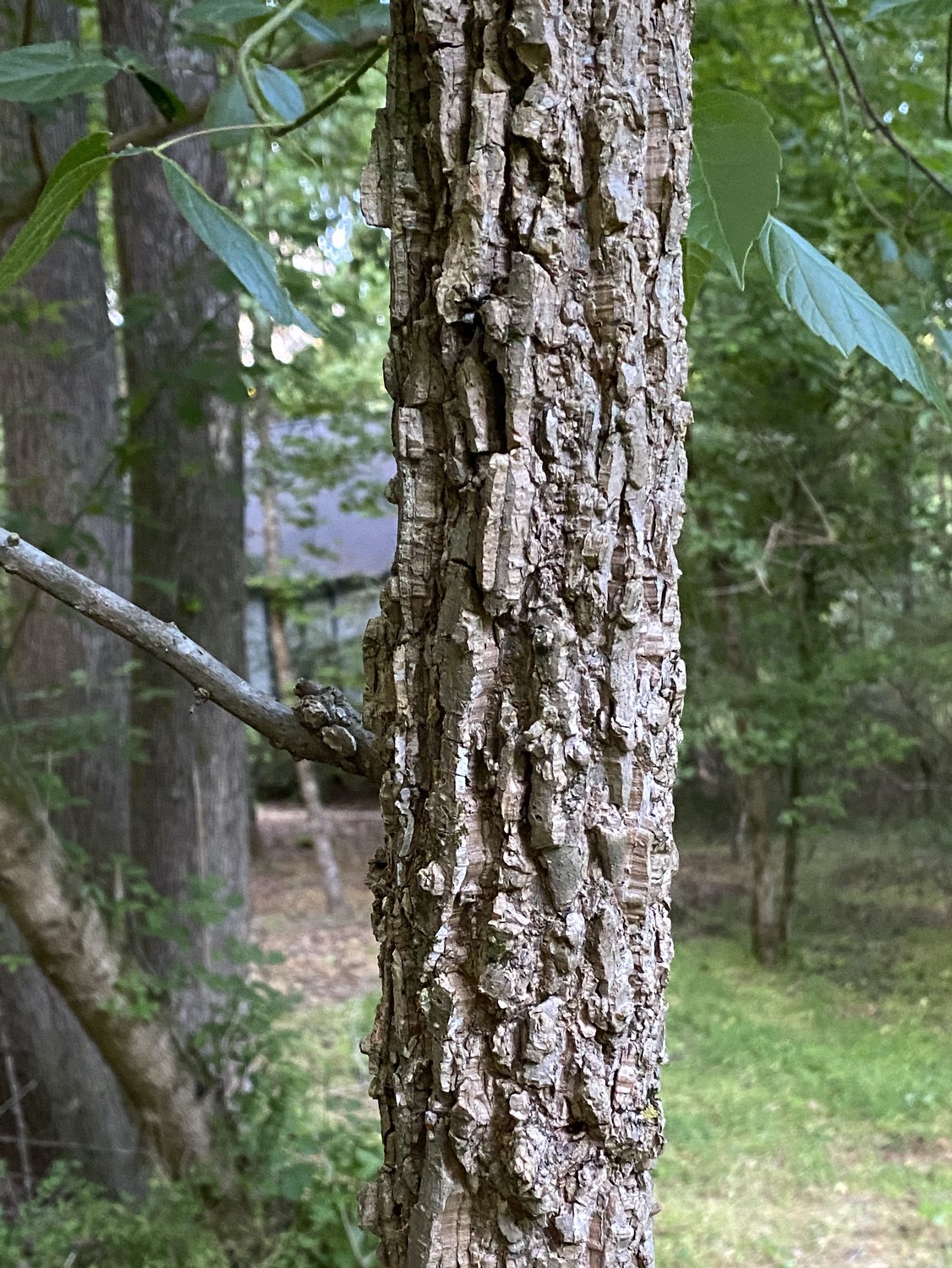

Eastern Hophornbeam (Ostrya virginiana, also called Ironwood). The leaves of the Eastern Hophornbeam are elliptical, with double-teeth along the edges, a narrow tip, and are 3–4" long. The widest part of the leaves tends to be about midway along its length. The fruits appear in May as long strings of overlapping shingles. The bark is distinctive, with long and narrow vertical strips, which become shaggy and peel up from their ends on older trees.
This is generally a small tree, usually no more than a few inches in diameter. It also grows in drier, more upland, habitats than the American Hornbeam.

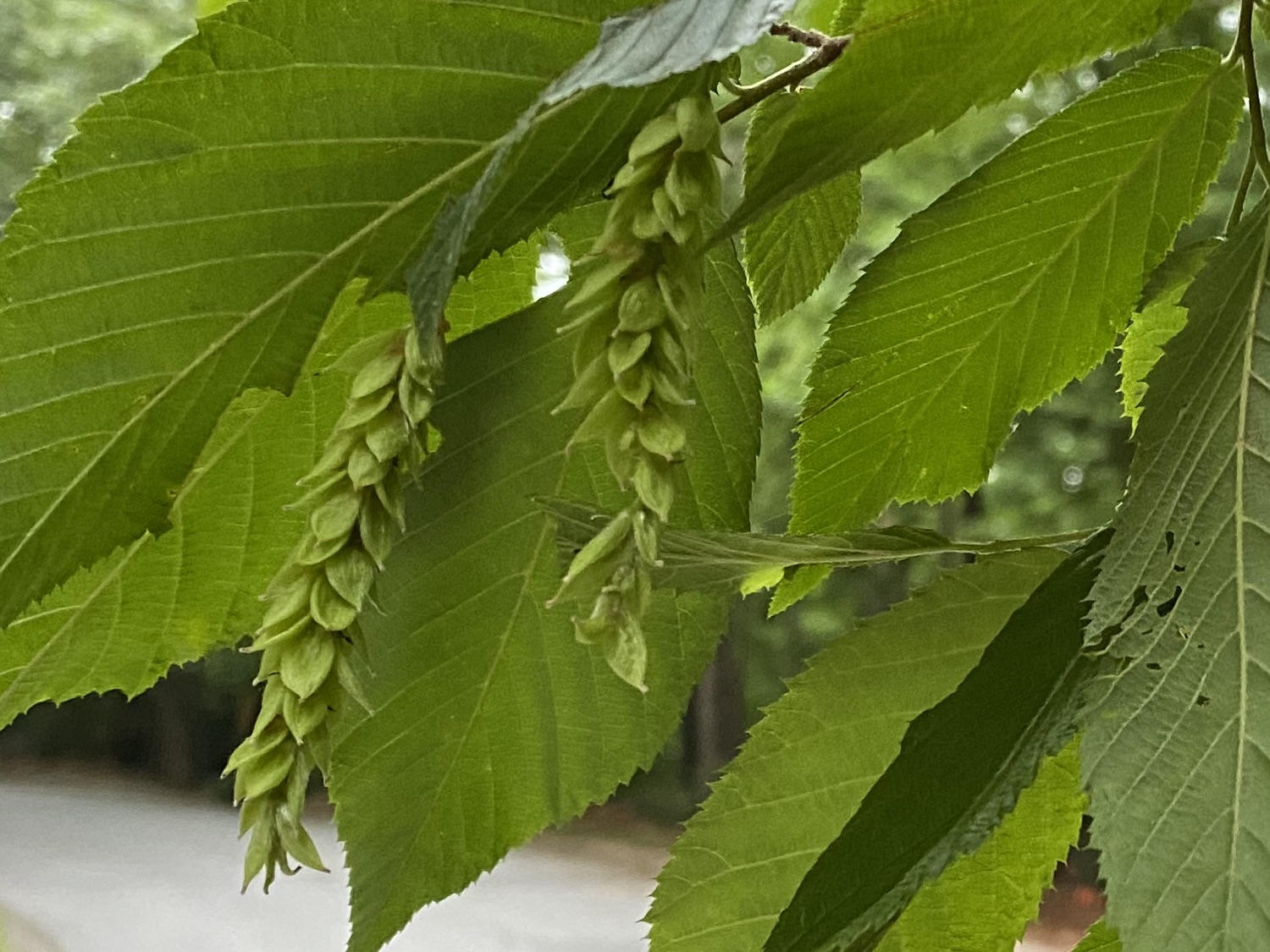

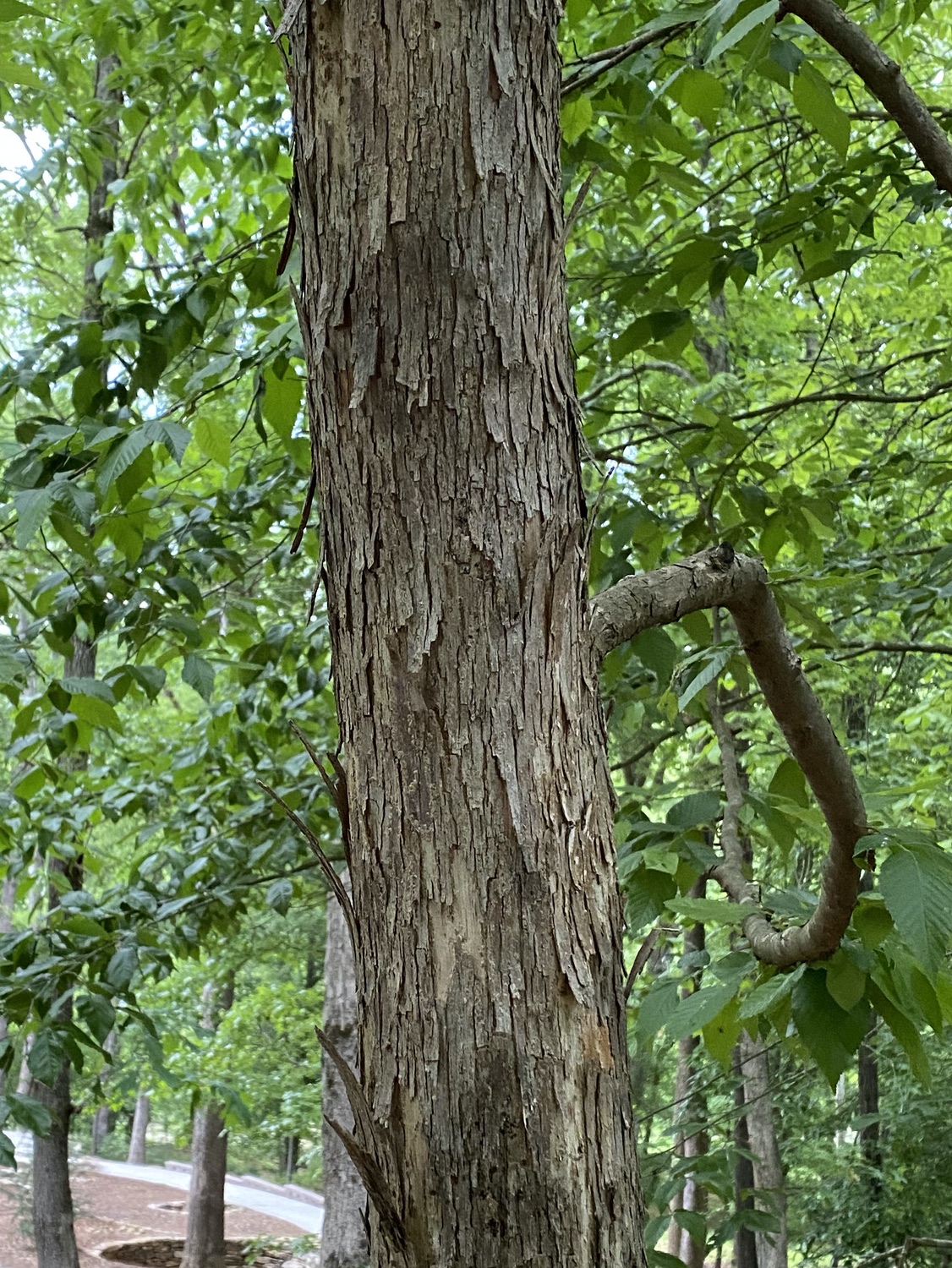
American Hornbeam (Carpinus caroliniana, also called Musclewood and Water Beech). The leaves of the American Hornbeam are similar to the Eastern Hophornbeam: 3–4" long, elliptical, with double-teeth along the edges, and a narrow tip. They differ in that the widest part of the leaf tends to be closer to the leafstalk. The bark is distinctive and is an easier way to tell these trees apart: the bark of the American Hornbeam is smooth and fluted. The fluting gives the tree a muscular look, hence its other common name, Musclewood. In late spring, clusters of papery fruits appear at the branch tips, and these turn pale yellow over the summer; the individual bracts are longer than those of the Eastern Hophornbeam.
The American Hornbeam commonly grows in moist areas such as along streams. Our neighbor has a very large one with a nearly 1½' trunk growing straight out over the river—it’s easy to see why it is also called the Water Beech.
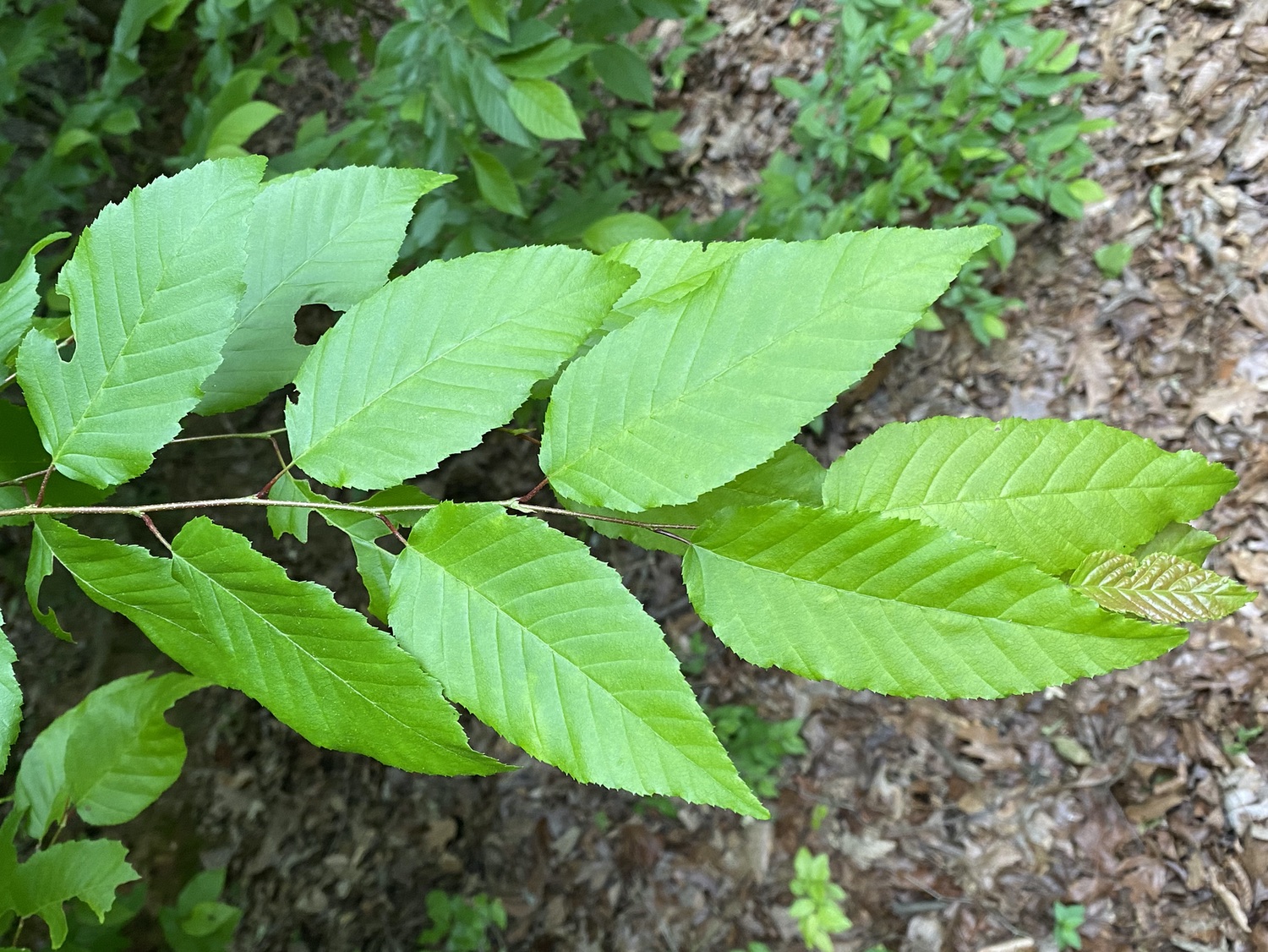
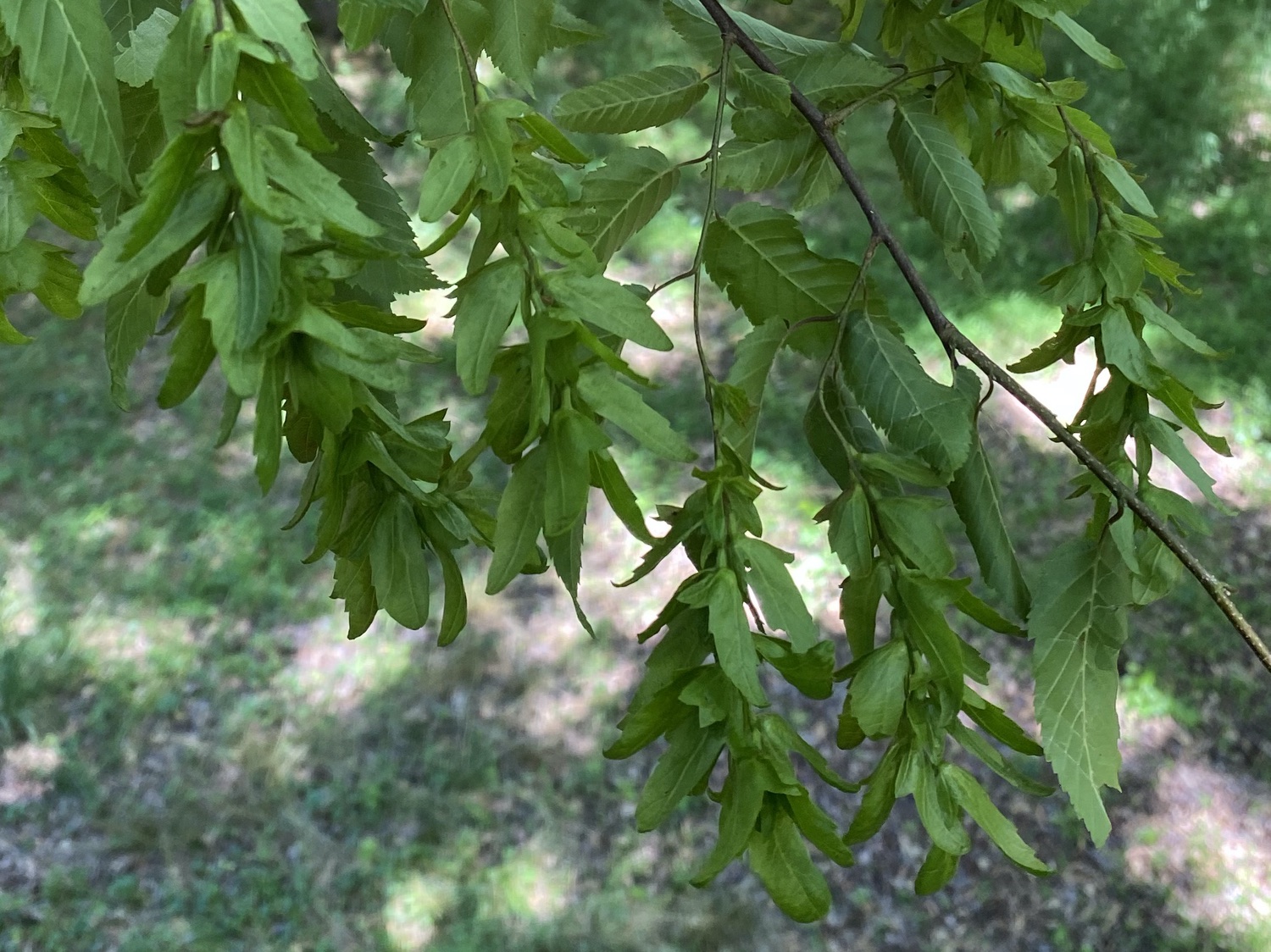
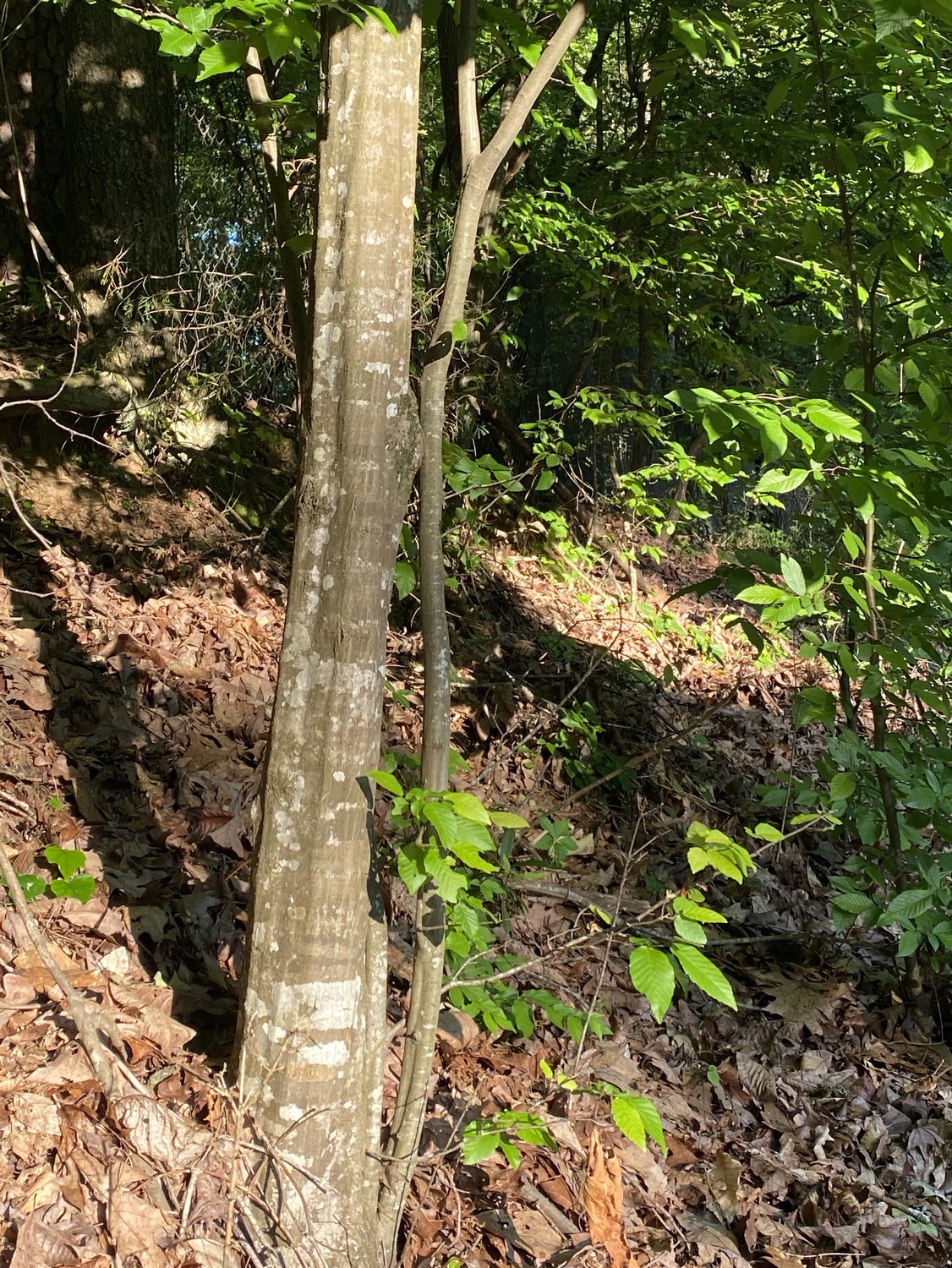
Southern Hackberry (Celtis laevigata, also called Sugarberry). Yet another tree with 3" long, elliptical-pointed, and toothed leaves, although the teeth are simple and rather wide. Some leaves are rounded at the base, and others have heart-shaped bases. The widest point tends to be closer to the leafstem, making them most similar to those of the American Hornbeam. The most distinctive feature of the Southern Hackberry are the warty knobs on the bark, which get more numerous as the tree gets older. The density of warts decreases upwards on some trunks.
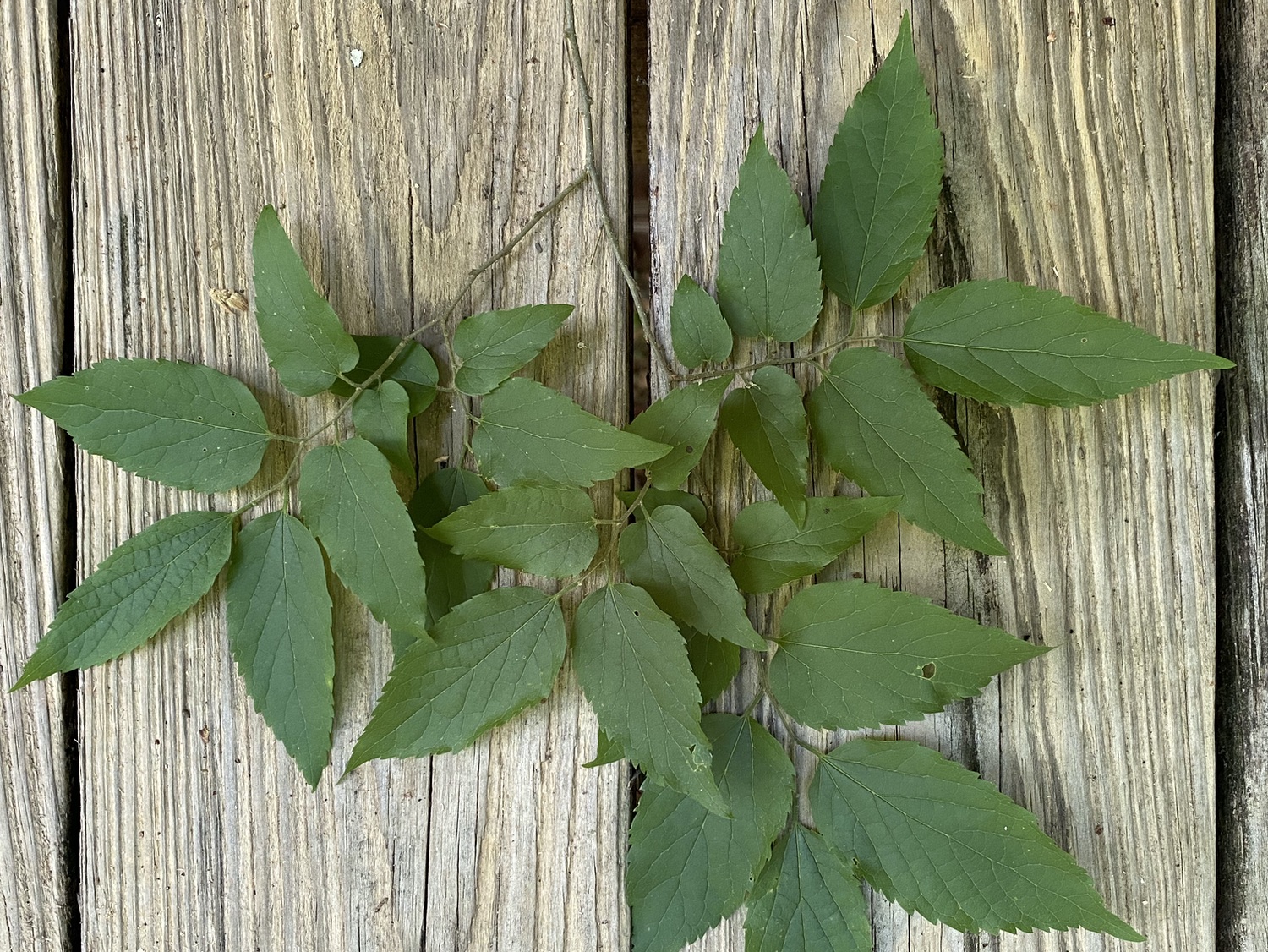
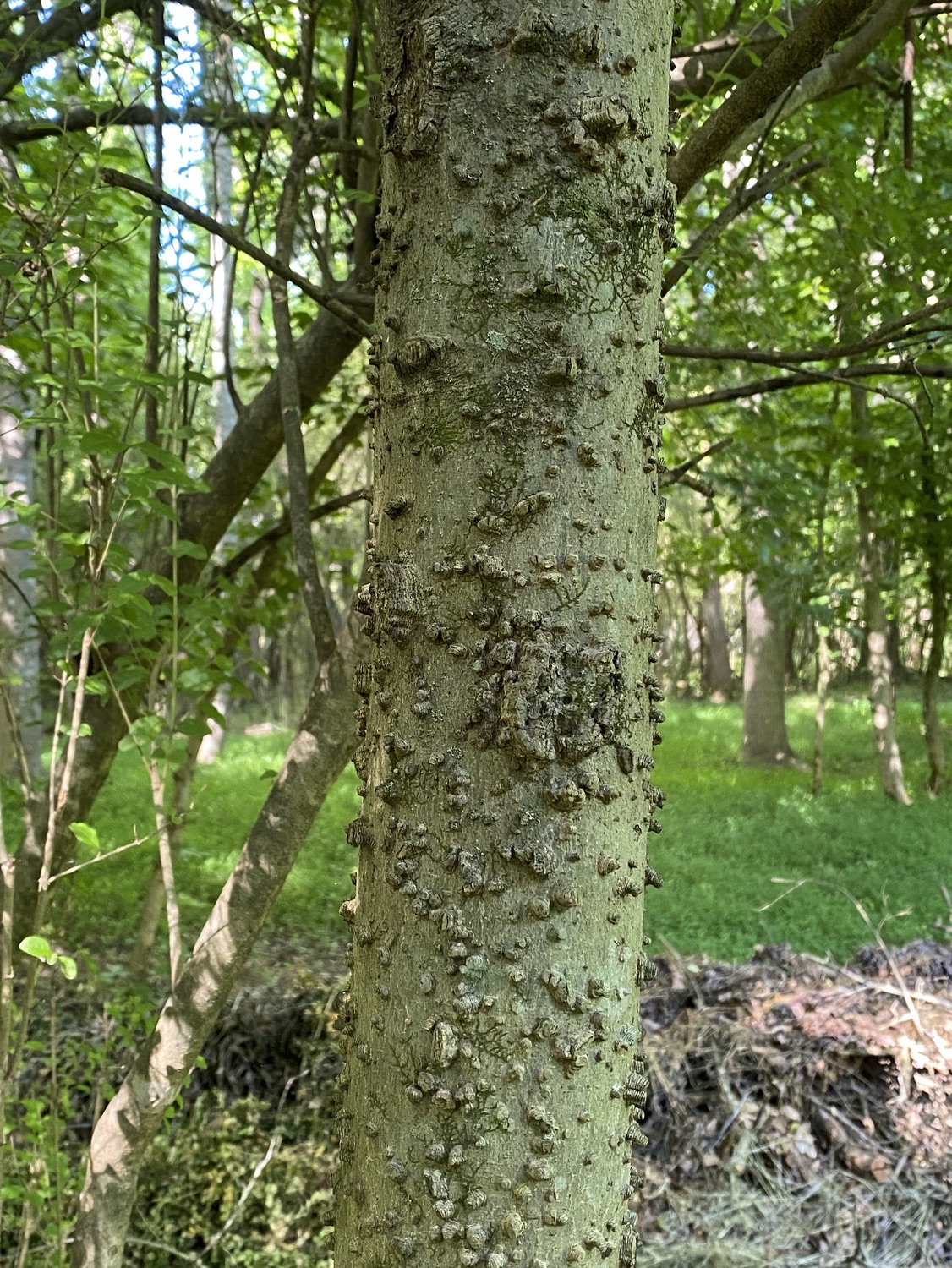
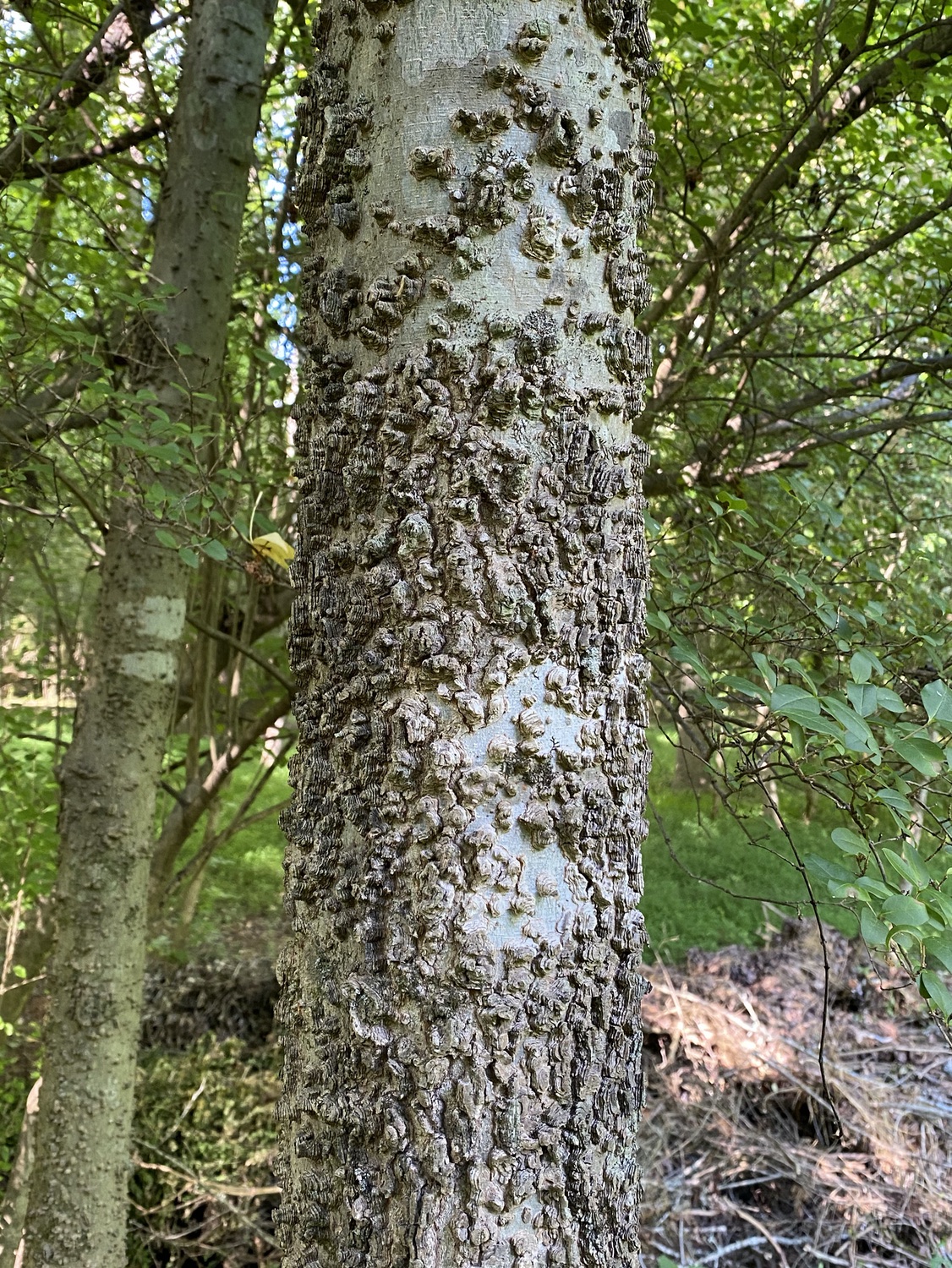
Red Mulberry (Morus rubra). Leaves are extraordinarily variable, but are commonly heart-shaped, toothed, with a tip. They are also usually rough on the top and variably hairy on the underside. Some leaves are single-lobed like a mitten, and some have two side lobes, but trees often lack lobed leaves. Leaves vary greatly in size, from about 2" to nearly 12" on vigorously growing branches. Where the leaf stem joins the leaf, the veins are symmetrical, with one on the left, in the center, and on the right. Red Mulberry produces edible elongated red–black fruits beginning in May. Red Mulberry has milky sap, easily seen when you pull a leaf from a twig.
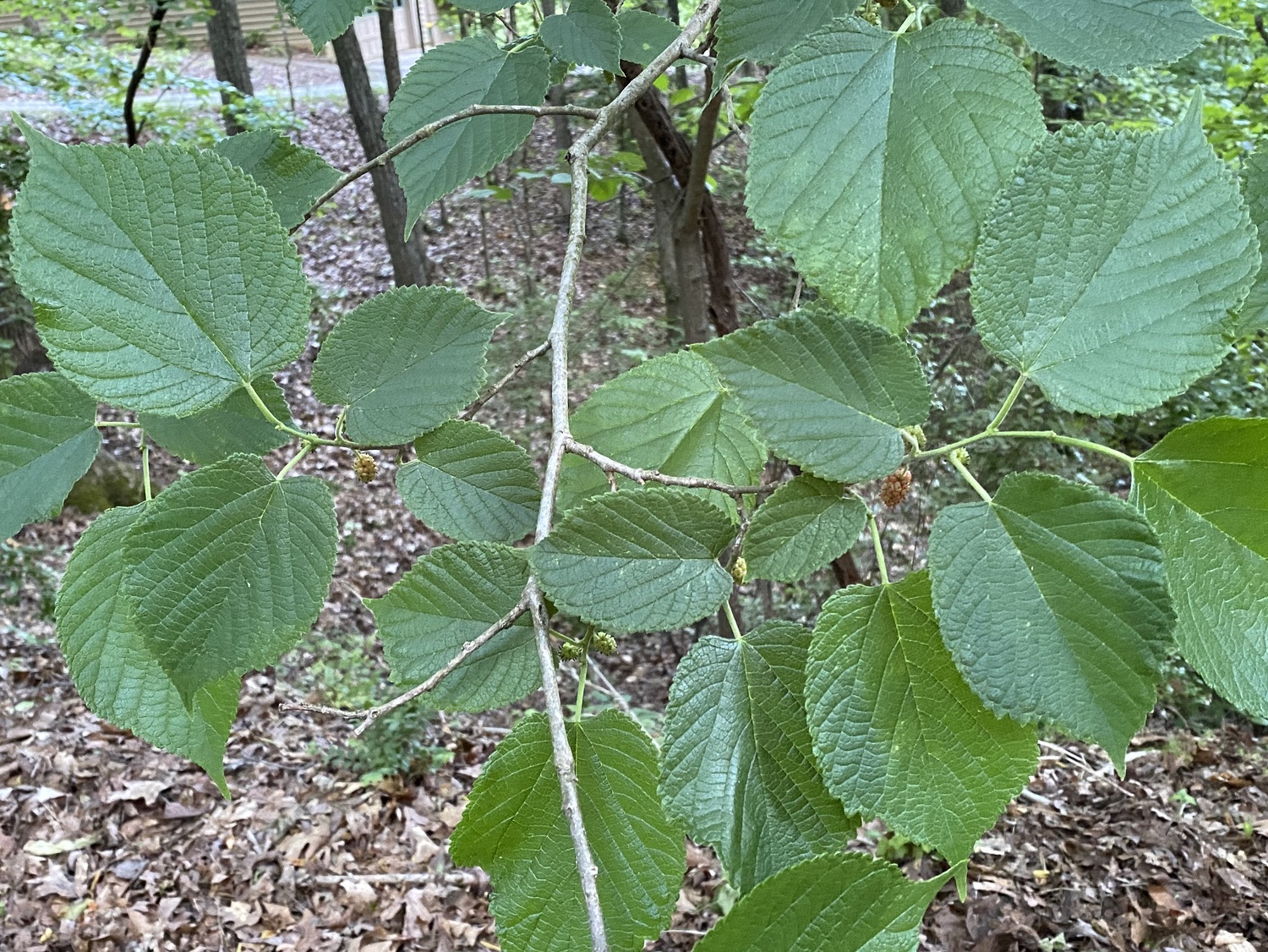
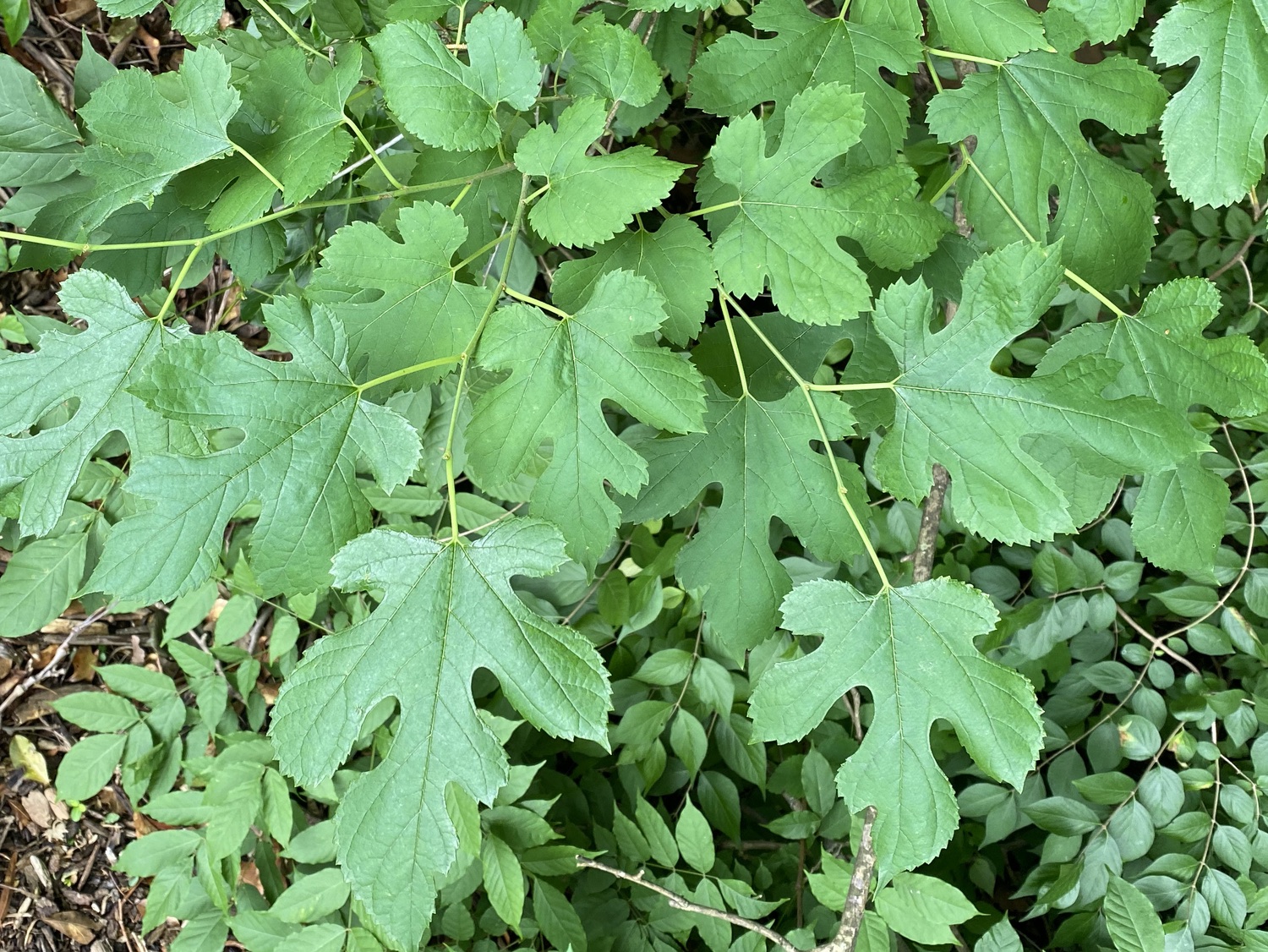
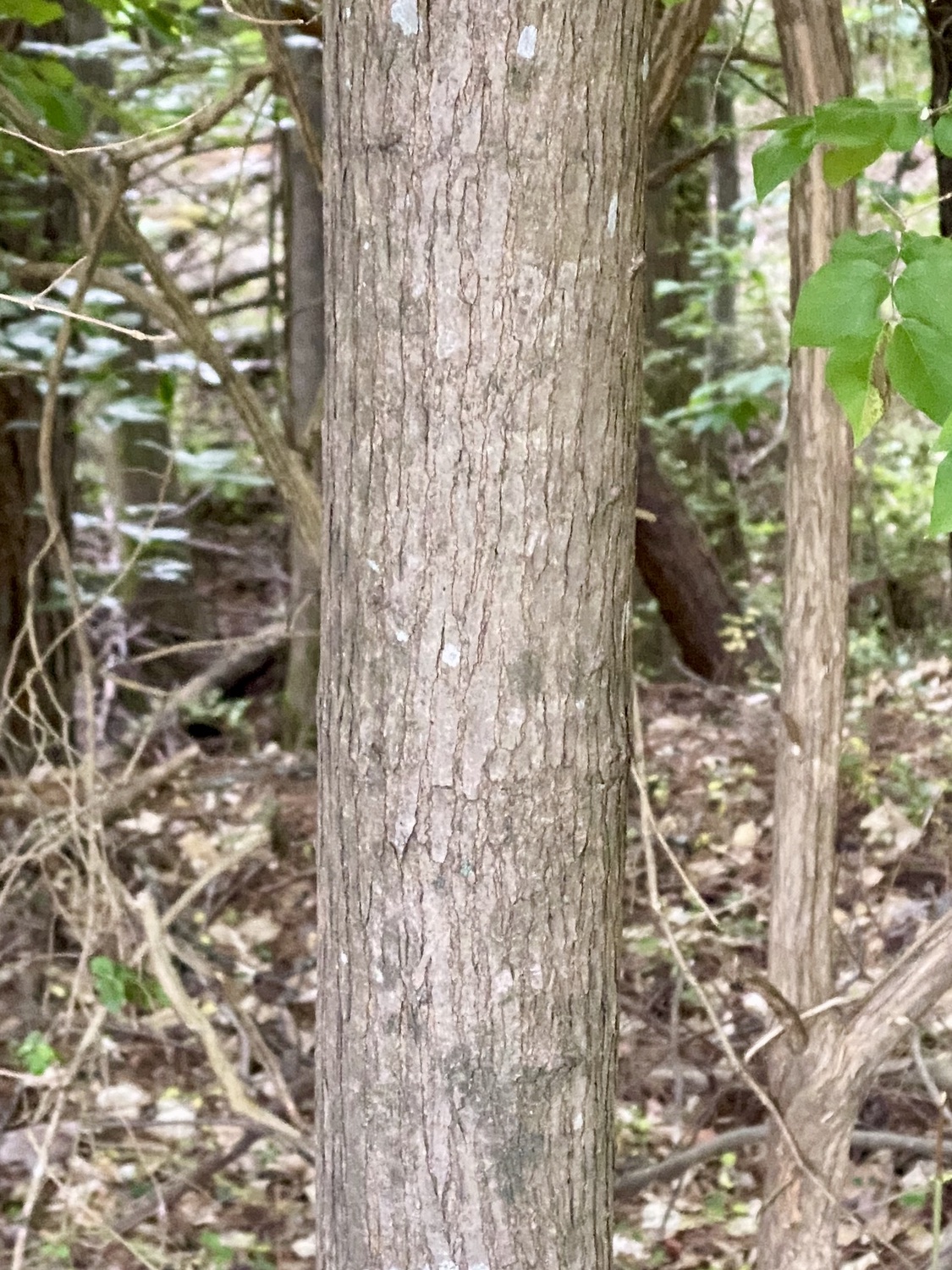
American Basswood (Tilia americana). Leaves are very similar to the Red Mulberry: heart-shaped, toothed, with a tip. Those of the American Basswood are smooth (sometimes waxy or greasy) on top. Where the leaf stem joins the leaf, the leaf is asymmetrical, with one vein on one side of the central vein, but two on the opposite side. The fruits are diagnostic, with a ray of flowers hanging from the middle of what looks like an elliptical leaf. American Basswood has clear sap.
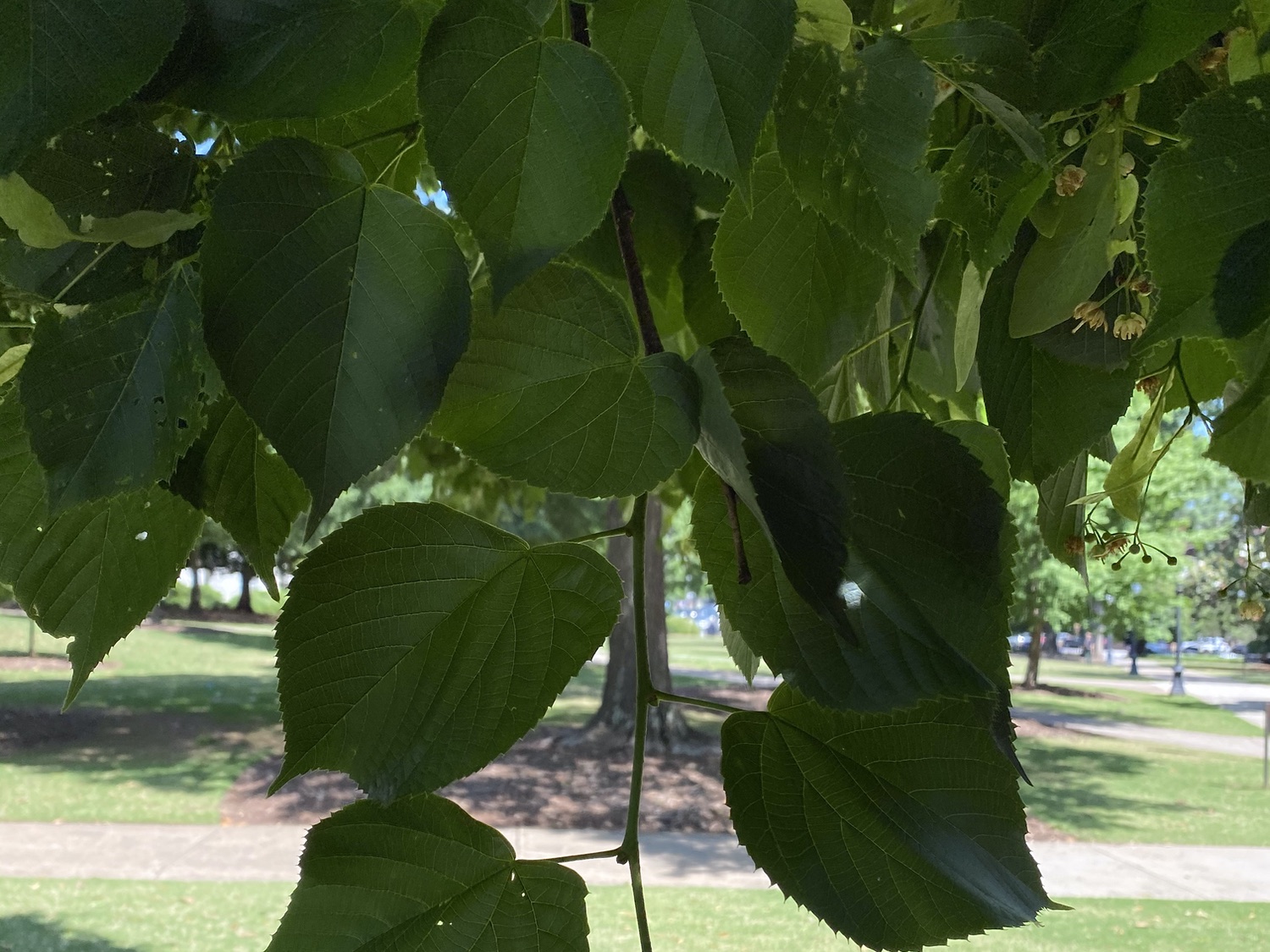
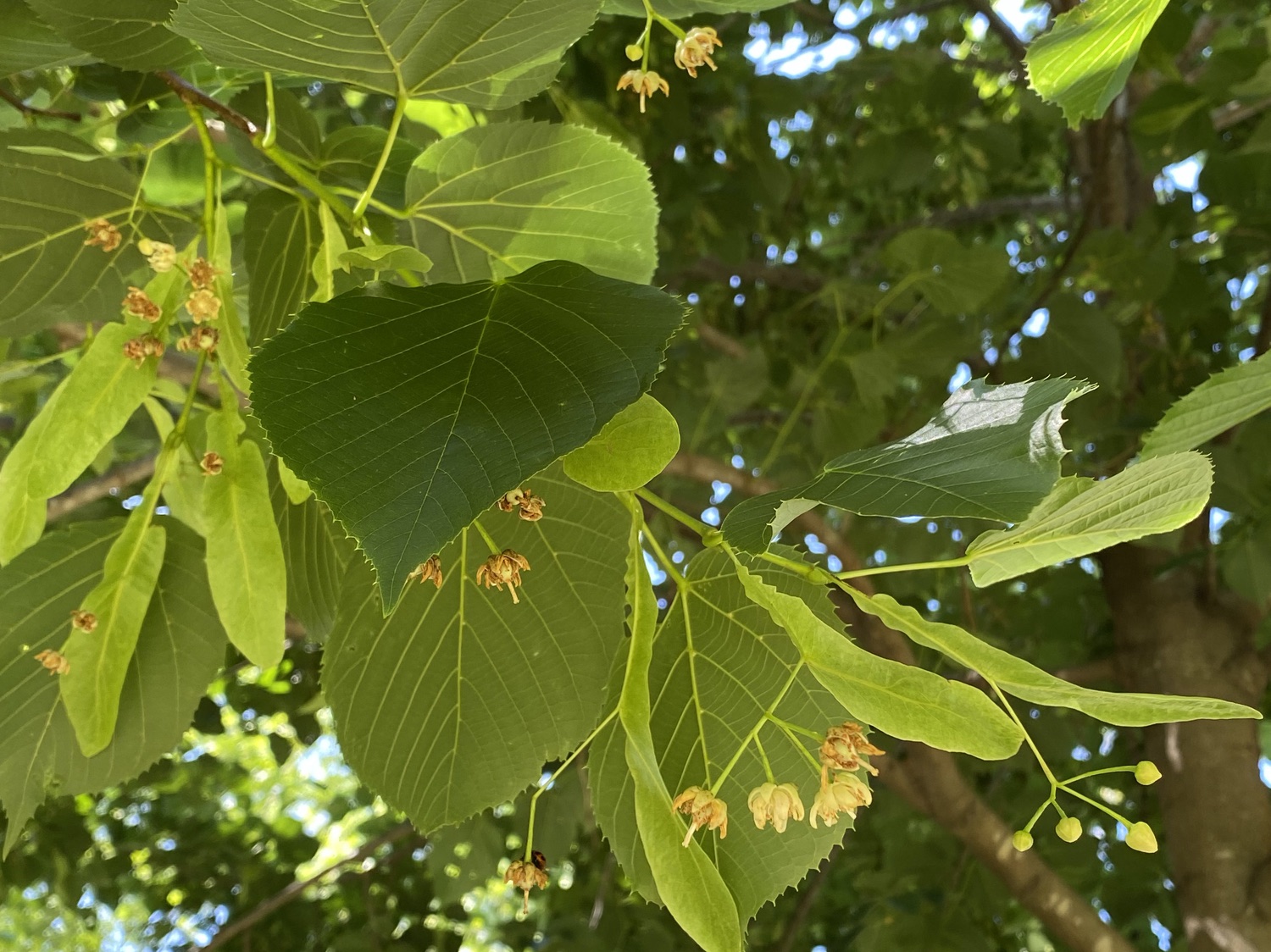
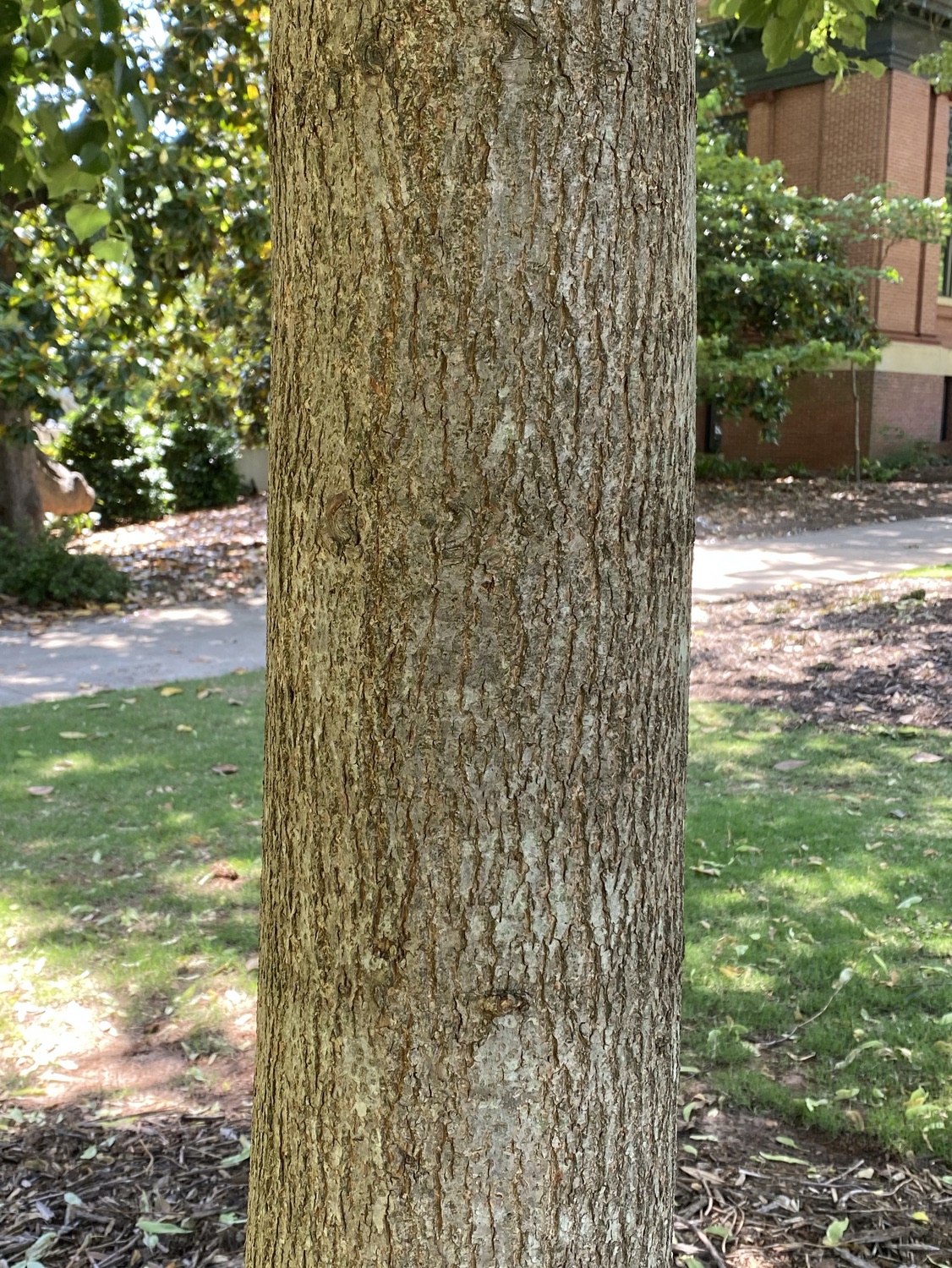
Many authors have commented on how difficult it is to distinguish the leaves of American Basswood and Red Mulberry. Almost every tree I thought was an American Basswood based on the size of the leaves proved to a Red Mulberry. If the fruits are present, its easy to distinguish the two, but in their absence, a close look is needed, and two criteria seem to be the most consistent.
First, pull a leaf off a stem and check the sap flowing from the leaf stem. On a Red Mulberry, the flow tends to be quick and the sap is milky. On an American Basswood, the flow may be slow and the sap is clear.
The second way, which can be done with binoculars is to look at the underside, where the leaf stem joins the leaf. On a Red Mulberry (top two in photo below), the veins are symmetrical or nearly so: there’s a left vein, a central vein, and a right vein, all joining at the leaf stem. For an American Basswood (bottom two), the pattern is asymmetrical, with two veins joining the leaf stem on one side, but only one on the opposite side, plus the central vein. The symmetry may not be the same: the two veins may be on the left side or on the right side.
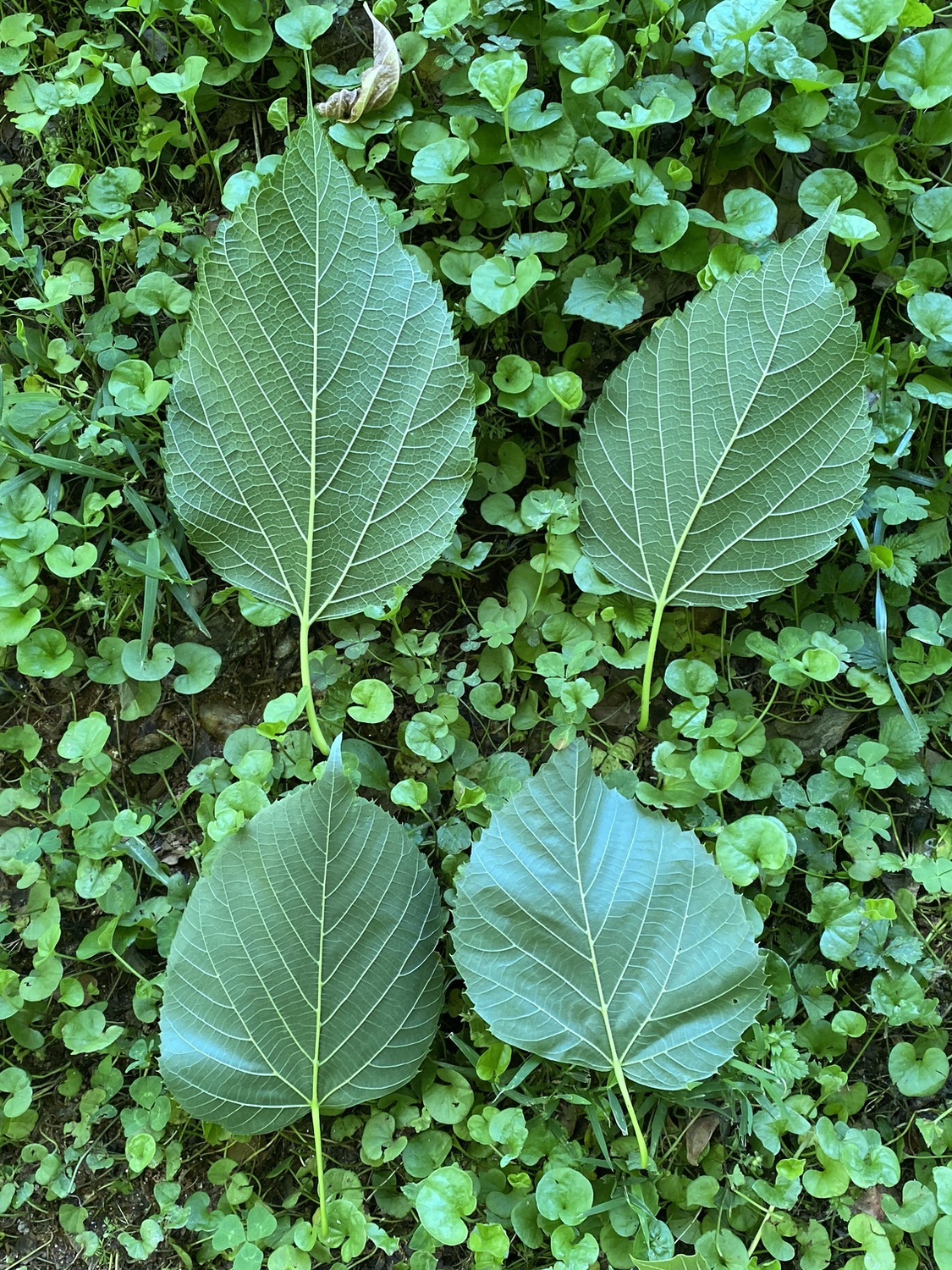
River Birch (Betula nigra). The leaves of the River Birch are coarsely toothed and almost triangular because the widest point is so close to the base of the leaf. The bark is distinctive, almost unmistakable in how it peels off in in rough papery sheets.
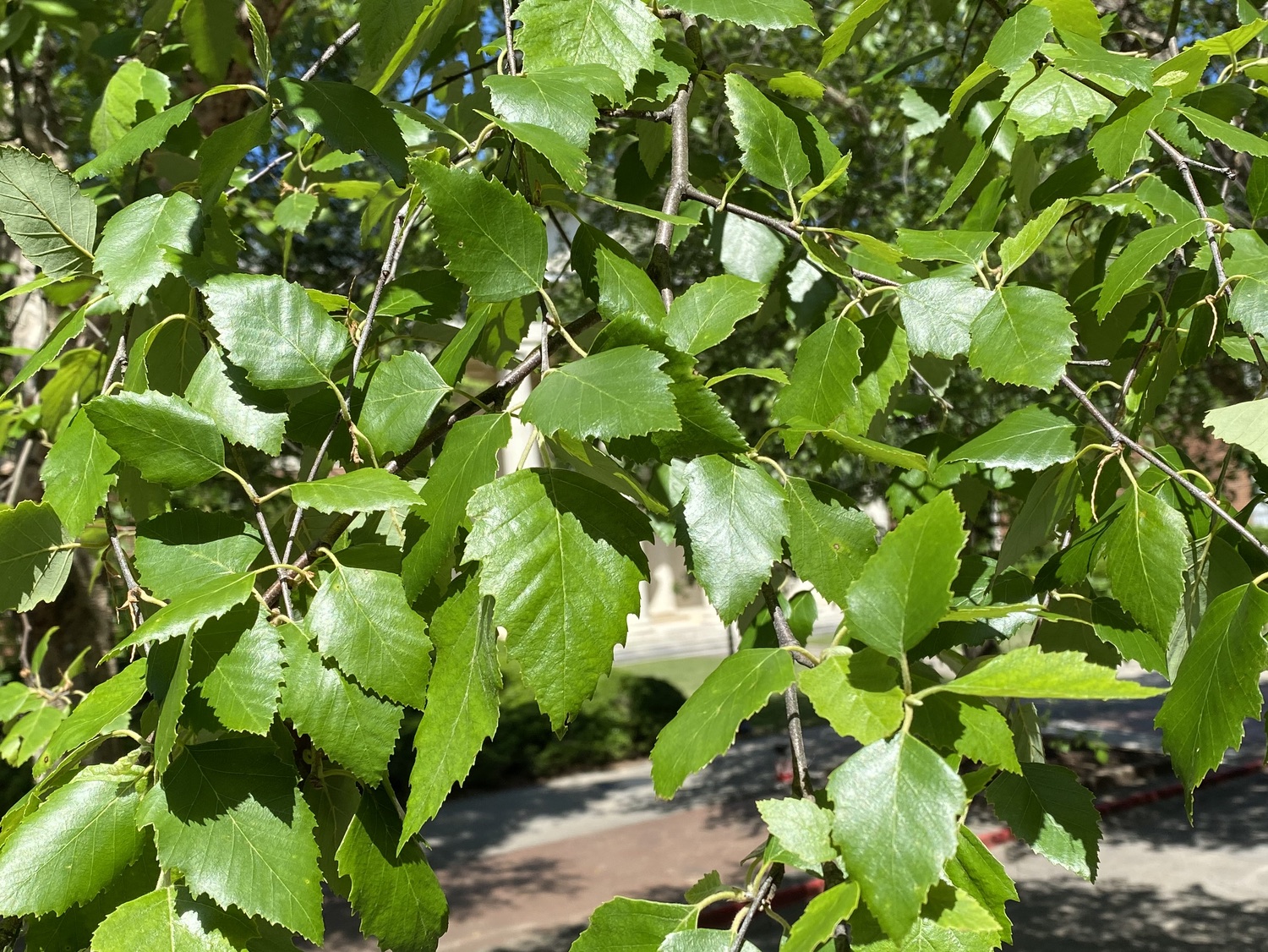
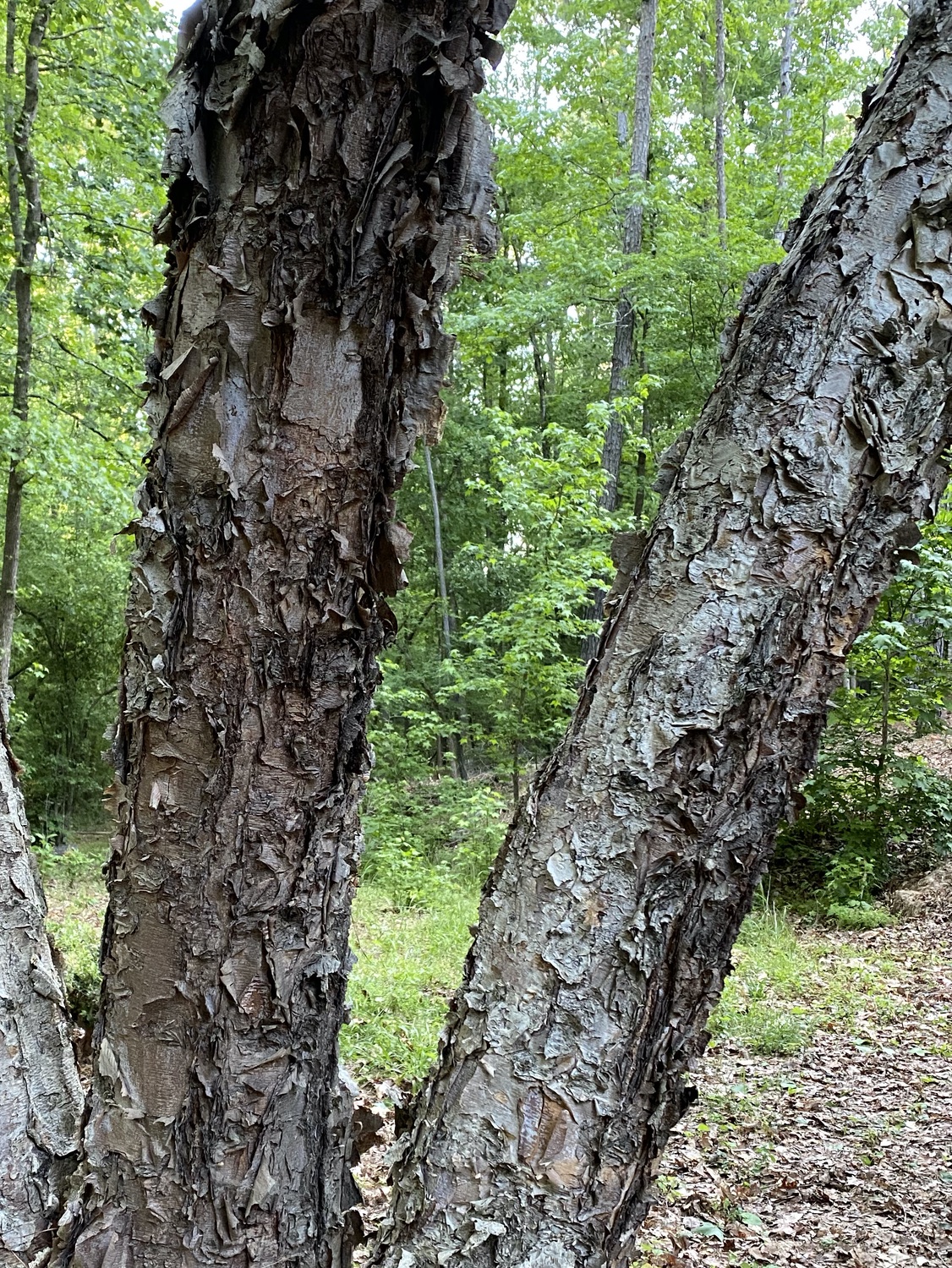
Allegheny Chinquapin (Castanea pumila, also called Allegheny Chinkapin, American Chinquapin, or Dwarf Chestnut). The elongate leaves are coarsely toothed, with bristles at the teeth, and look like a small (2–3") chestnut leaf>. The bark, even of young trees, is coarsely furrowed. This is an uncommon tree in our area; so far, I’ve found only one.

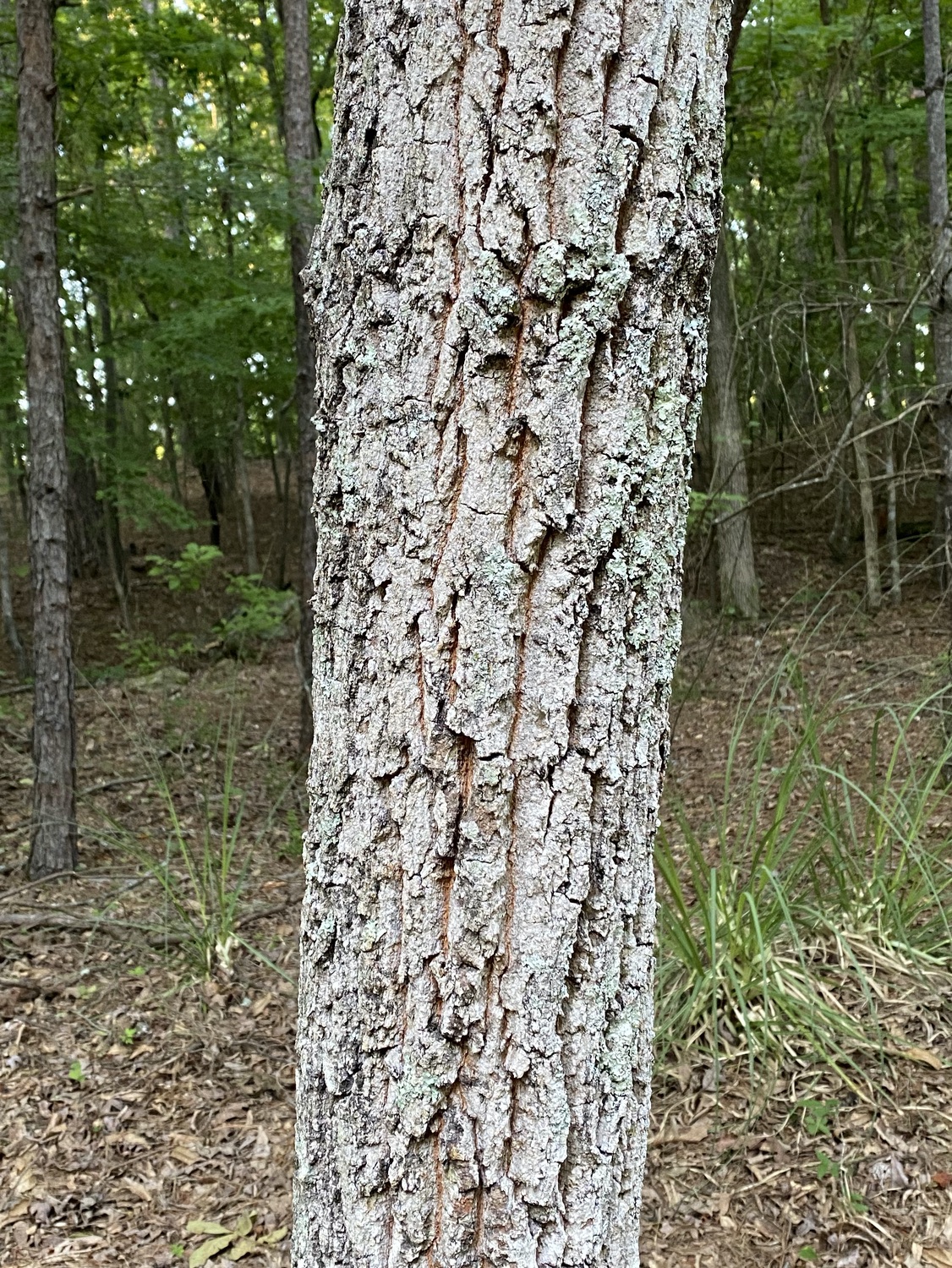
Black Cherry (Prunus serotina). The leaves are finely toothed, about 3" long, and pointed. The bark of young trees is distinctive with its smooth concentric bands and fine linear warts, called lenticels.
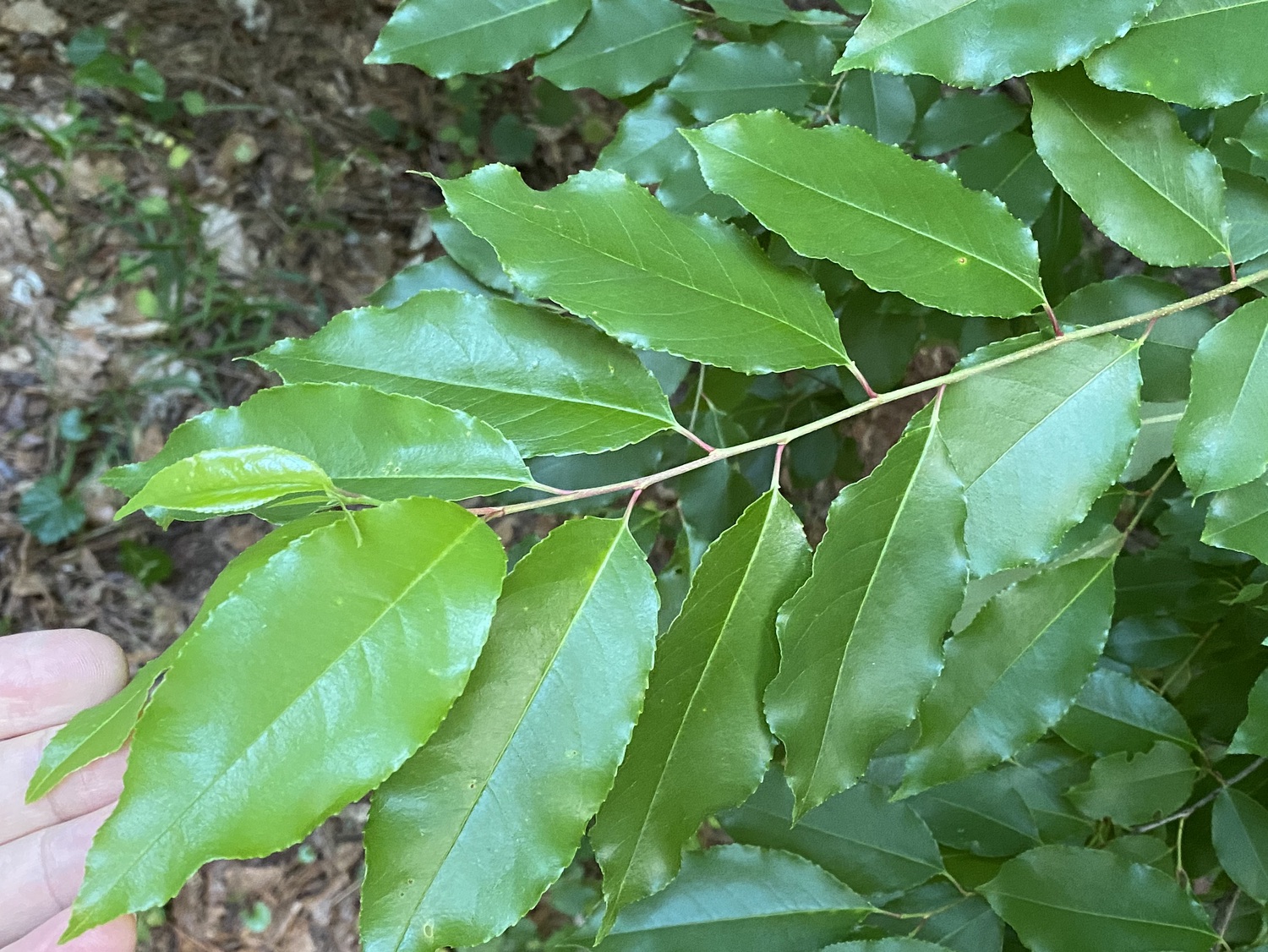
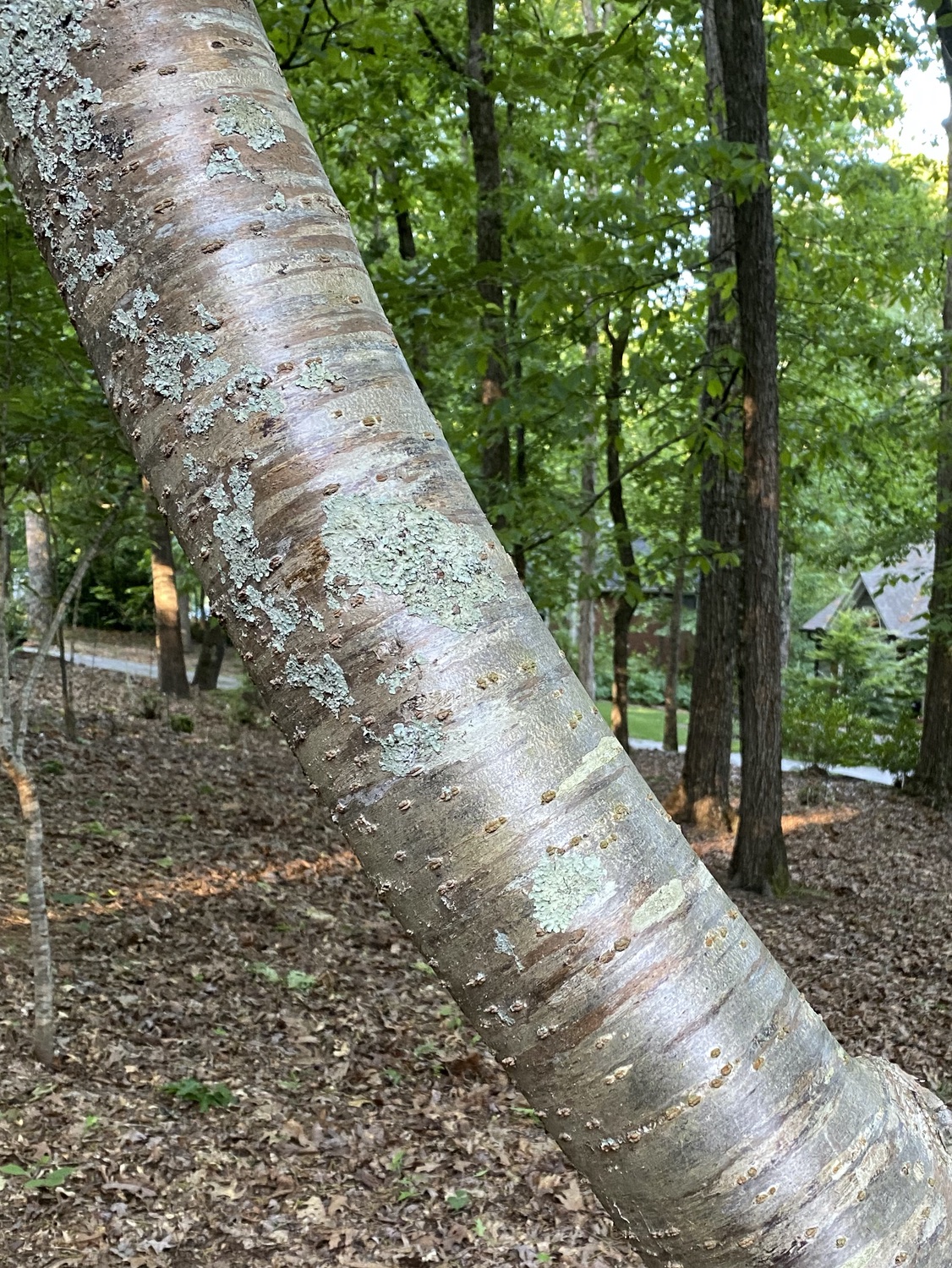
Sourwood (Oxydendrum arboreum). The leaves are about 7" long, very finely toothed (so finely so that it might be overlooked), elliptical, with rounded tips. The bark is deeply furrowed, and trunks of trees are commonly inclined.
